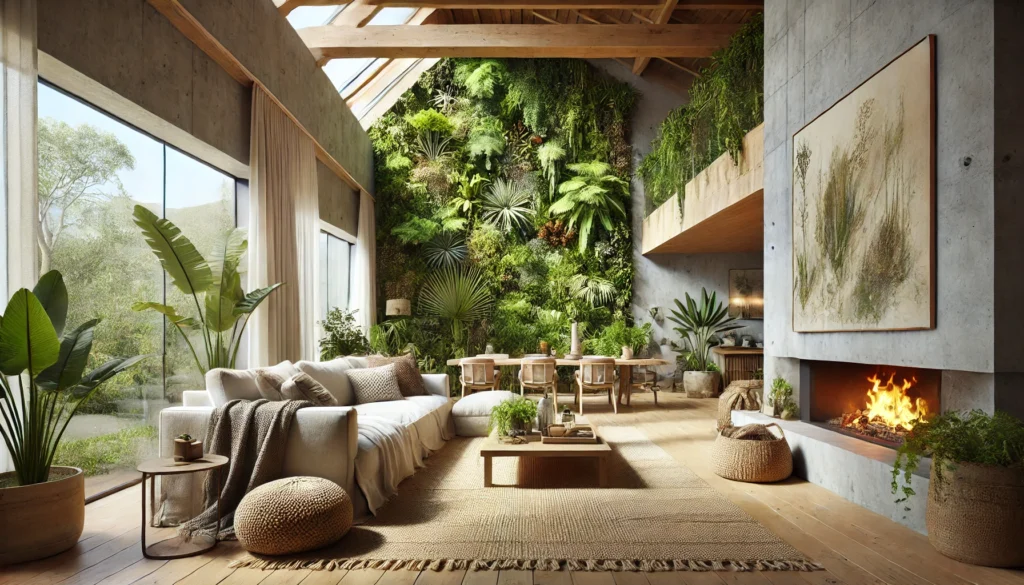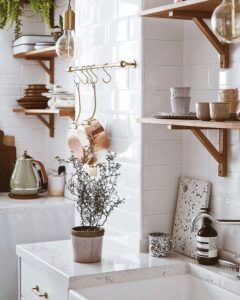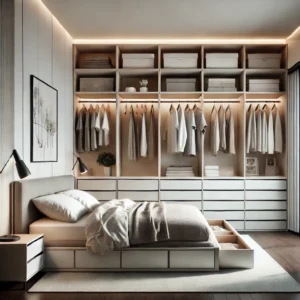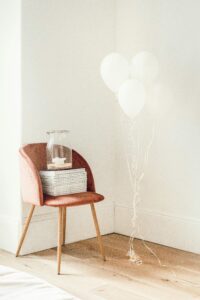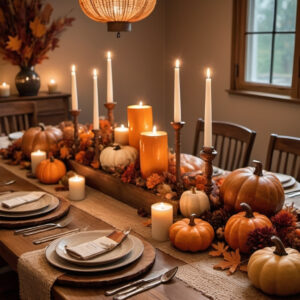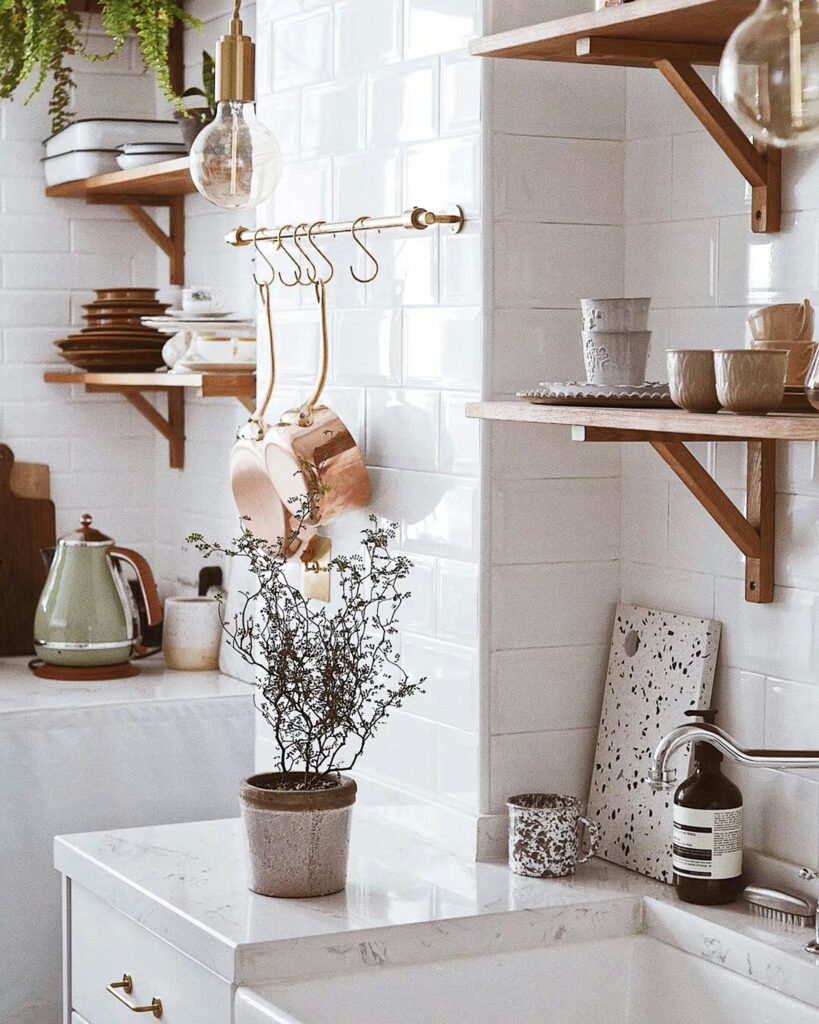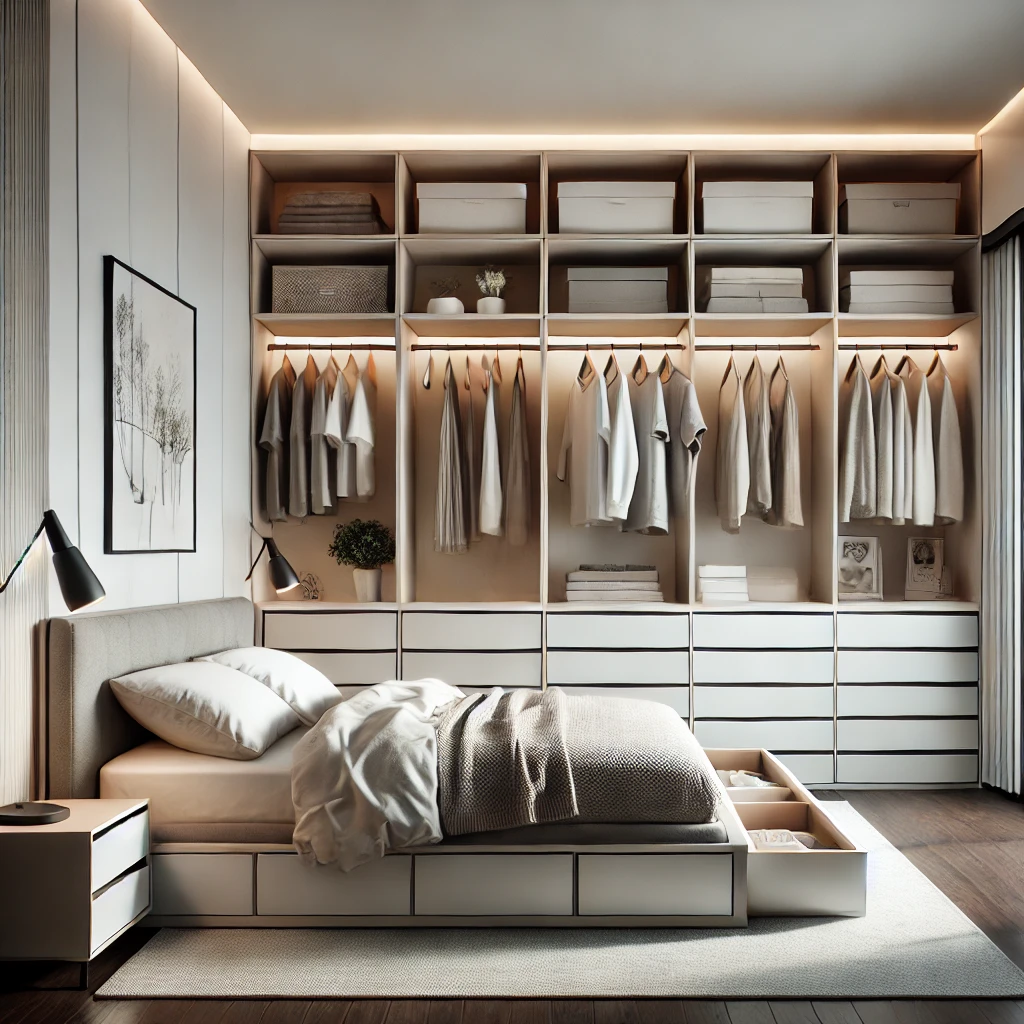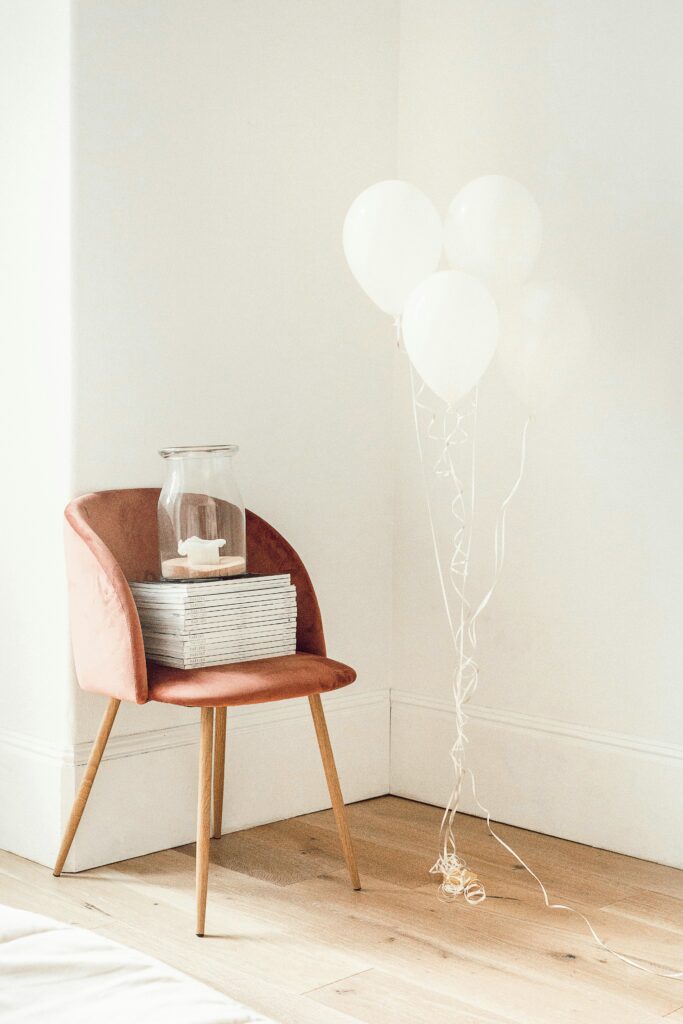In today’s increasingly urbanized society, many of us spend a substantial amount of time indoors, away from nature. Biophilic design, which incorporates natural components into our living spaces, seeks to close this gap and establish a connection with nature. This design idea not only improves the aesthetics of our houses, but also boosts mental health. Let’s look at some of the best biophilic home decor ideas that can change your living environment into a peaceful, nature-inspired oasis.
Best Biophilic Home Decor Ideas
1. Indoor Plants
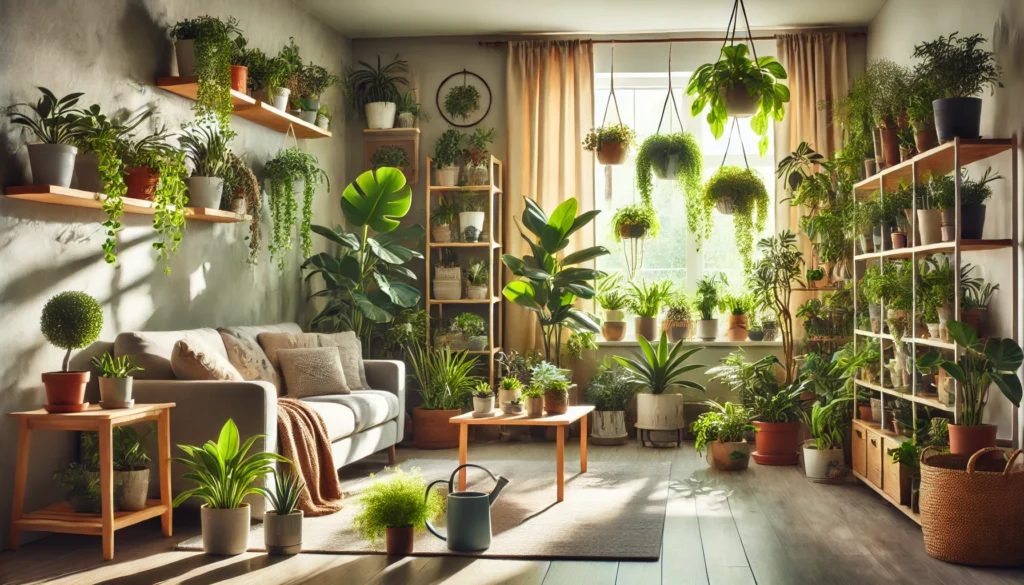
Aside from their aesthetic value, indoor plants have various other benefits. They improve air quality by absorbing contaminants and raising oxygen levels, making the air cleaner and more breathable. Plants can alleviate stress and anxiety, improve mood and productivity, and even aid in healing and recovery. They also help to manage humidity by raising moisture levels, which is very useful in arid conditions. Plants also boost concentration and focus and generate a sense of relaxation and well-being, making them an excellent addition to any home or workplace.
Popular Indoor Plants
- Fiddle Leaf Fig: Known for its big, glossy leaves and dramatic appearance.
- Snake Plants: Low-maintenance and have long, upright leaves that filter air contaminants.
- Peace Lily: Elegant white blossoms and air-purifying properties.
- Spider Plants: Easy to grow and have arching leaves that clear the air.
- Pothos: A tough trailing vine ideal for hanging baskets.
- Aloe Vera: A succulent with therapeutic benefits and minimal water requirements.
- Philodendron: A versatile plant with heart-shaped leaves that thrives in low-light environments.
Applications in Home Décor
- Living Room: Create focus points in your living room with giant statement plants like fiddle leaf figs or rubber plants. Smaller plants can be placed on shelves, coffee tables, or window sills.
- Bedroom: In the bedroom, add air-purifying plants like snake plants or peace lilies to improve air quality and create a relaxing mood.
- Kitchen: Use herbs like basil, mint, and rosemary in the kitchen to offer both functionality and fragrance.
- Bathroom: Greenery in the bathroom can be added with ferns and orchids, which thrive in high humidity.
- Home Office: Increase productivity and reduce stress by placing plants on your desk or bookshelf. Examples include pothos and philodendrons.
Practical Tips
- Lighting: Choose plants that complement the lighting conditions in your environment. Low-light plants for dark regions, and sun-loving plants for sunny spots.
- Watering: Maintain proper watering procedures. Overwatering and underwatering are common problems. Use pots with drain holes.
- Maintenance: Maintain plant health by dusting and pruning leaves on a regular basis.
- Containers: Use beautiful pots and planters to match your décor. Consider using natural materials such as clay, terracotta, and woven baskets.
- Arrangement: For a natural, layered look, group plants of varied heights and textures together.
Indoor plants are crucial in biophilic home décor because they provide several health advantages, improve air quality, and enhance the natural beauty of indoor environments. By carefully selecting and caring for indoor plants, you may create a peaceful, inviting, and health-promoting environment in your home.
2. Living Walls
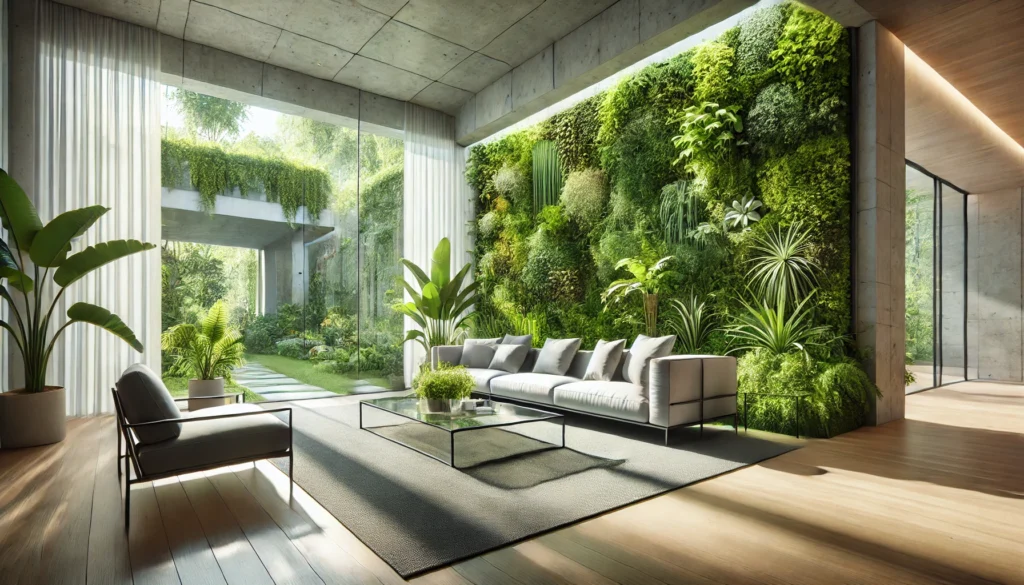
Living walls, also known as green walls or vertical gardens, are creative and visually appealing solutions to bring nature into urban and interior settings. These walls are covered in diverse plants, resulting in a lush, vertical garden that is both gorgeous and functional. Let’s take a closer look at living walls and their benefits:
Benefits
- Air Quality Improvement: Acts as a natural air filter, absorbing contaminants and releasing oxygen.
- Thermal Regulation: Provides natural insulation to keep spaces cool in summer and warm in winter.
- Noise Reduction: Reduces noise pollution by absorbing sound waves.
- Aesthetic Appeal: Converts ordinary walls into bright, live artworks.
- Mental Well-Being: Decreases tension and boosts mood.
- Biodiversity: Supports insects, birds, and wildlife.
Types of Living Walls
- Modular Systems: Simple installation and maintenance with pre-planted panels.
- Tray Systems: Individual trays for convenient plant change.
- Freestanding Walls: Can serve as room dividers or stand-alone features.
- Climbing Systems: Use climbing plants on a support structure.
Care and Maintenance
- Irrigation: Automated systems provide consistent watering.
- Lighting: Indoor walls may need grow lights.
- Pruning and Replacement: Regular pruning and plant replacement help maintain health and attractiveness.
- Nutrient Management: Regular fertilizing may be necessary.
Common Plants
- Ferns: For a lush, tropical look.
- Succulents: Low-maintenance and drought-tolerant.
- Herbs: Functional and fragrant.
- Flowers: Add color and visual interest.
- Vines: Fast-growing, suitable for large areas.
Installation Tips
- Location: Choose appropriate light and temperature conditions.
- Support Structure: Make sure it can support the weight.
- Waterproofing: Use a waterproof barrier to protect the walls from dampness.
Living walls have several environmental, aesthetic, and health benefits, making them a popular choice in modern architecture. They improve both indoor and outdoor environments, making a visually appealing and environmentally friendly addition to any setting.
3. Natural Light
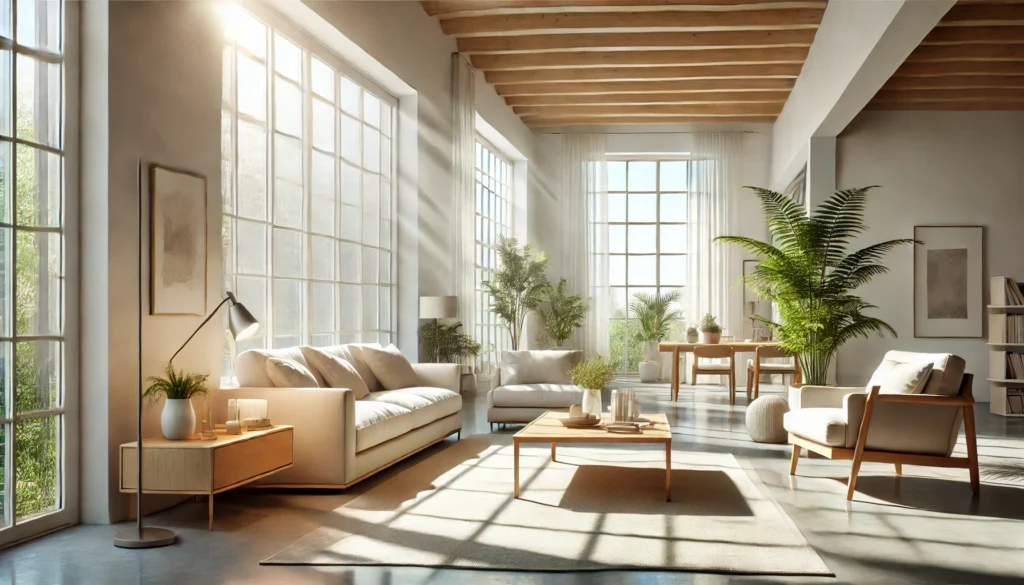
Natural light is an important component of biophilic design, which aims to incorporate natural aspects into constructed spaces in order to enhance health and well-being. Here’s how natural light affects biophilic design:
Benefits
- Health and Well-Being: Enhances mood, decreases stress, and regulates sleep.
- Productivity: Promotes cognitive function and creativity.
- Energy Efficiency: Reduces the demand for artificial lighting and heating/cooling.
- Aesthetic Appeal: Highlights colors and textures, making rooms appear larger and more inviting.
Strategies
- For optimal sunlight, place large windows facing south.
- Install skylights and sun tunnels to provide natural light in rooms lacking windows.
- Use mirrors and bright-colored walls to reflect light.
- To manage light, use sheer curtains or adjustable shades.
- Trim exterior plants to allow for natural light.
Natural light is a key component of biophilic design, providing significant health, aesthetic, and efficiency benefits. By deliberately incorporating natural light into architectural design, we can create environments that improve well-being, productivity, and general quality of life.
4. Natural Materials
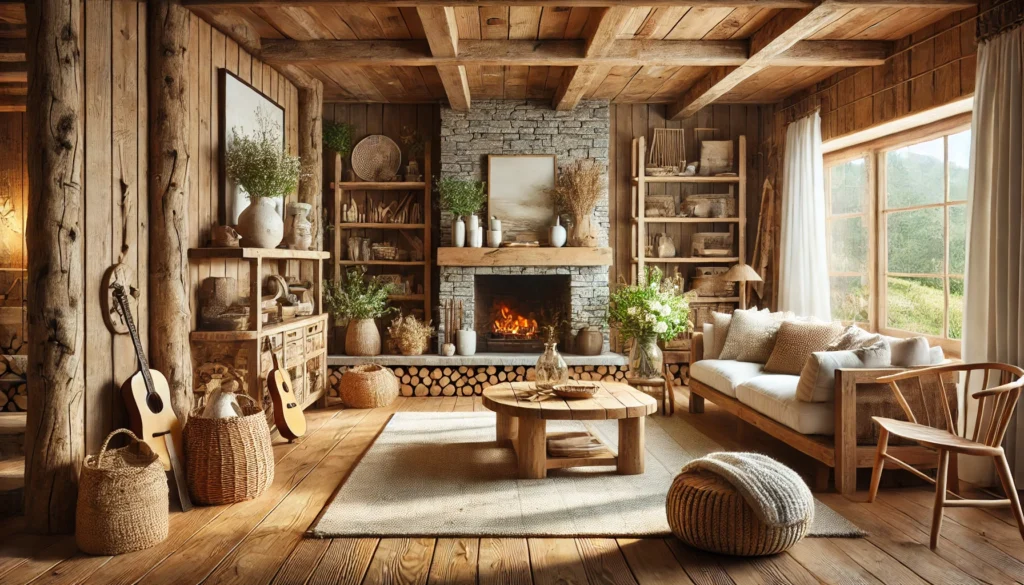
Incorporating natural materials into home décor is an important part of biophilic design, which seeks to create harmonious living spaces that connect residents to nature. This is how natural materials may improve your home:
Benefits
- Health and Well-Being: Natural materials such as wood, stone, and bamboo provide a tranquil and soothing environment, lowering tension and increasing relaxation.
- Aesthetic Appeal: These materials bring warmth, texture, and organic beauty to your home, making it more visually appealing.
- Sustainability: Natural materials are more sustainable and eco-friendly than synthetic alternatives, decreasing environmental impact.
- Tactile Connection: Touching natural surfaces boosts sensory experience and connection to nature.
Common Natural Materials
- Wood: Wood, whether used as furniture, flooring, or accents, adds warmth and richness to any area. Oak, walnut, and bamboo provide distinct looks and textures.
- Stone: Granite, marble, and slate are popular choices for countertops, floors, and ornamental features. Stone provides a sense of solidity and natural beauty.
- Bamboo: Bamboo is a quickly renewable material utilized for flooring, furniture, and décor. It is sturdy and has a clean, modern appearance.
- Clay: Terracotta and ceramic tiles manufactured from clay are used for flooring and décorative features, providing earthy tones and textures.
- Natural Fibers: Textiles, rugs, and upholstery are made of soft and comfortable materials such as cotton, linen, wool, and jute.
- Cork: Cork is a sustainable, robust material used for flooring and wall coverings that provides good insulation.
Natural materials in biophilic home décor not only improve the aesthetics and comfort of your living environment, but they also develop a stronger connection to nature, encouraging general well-being and sustainability. By carefully combining these components, you may create a harmonious and welcoming home setting.
5. Natural Textiles
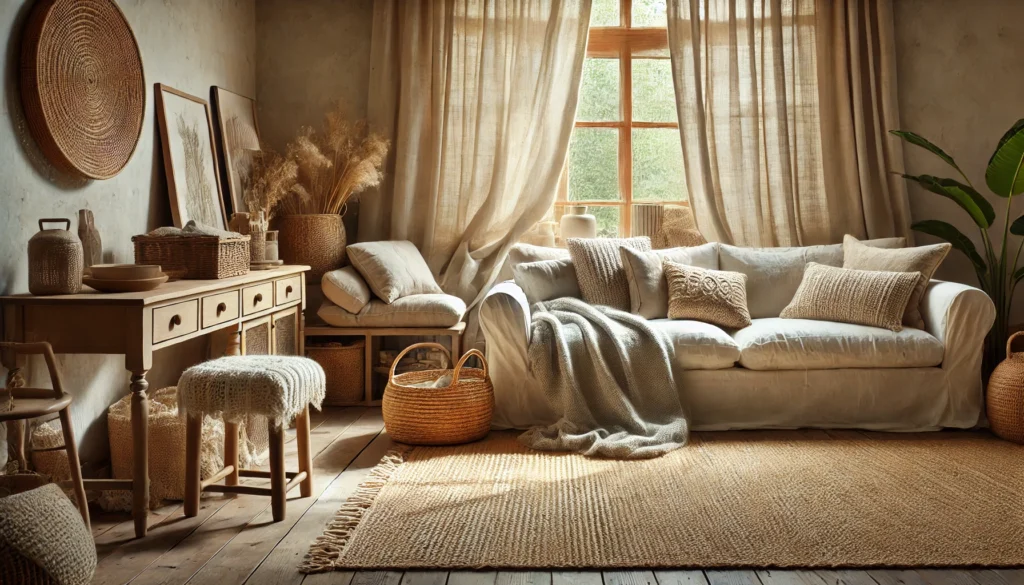
Natural textiles are important in biophilic home décor because they incorporate natural components into your living space, making it more comfortable and aesthetically beautiful. Here’s how natural textiles can improve your home:
Benefits
- Comfort and Softness: Natural fabrics such as cotton, wool, linen, and silk provide excellent comfort and softness, improving the tactile experience in your home.
- Breathability: Natural materials are permeable, which helps to control temperature and create a comfortable indoor environment.
- Aesthetic Appeal: Natural textiles provide natural beauty, texture, and warmth to home décor, providing a cozy and inviting ambiance.
- Sustainability: They are more eco-friendly than synthetic alternatives, as they are biodegradable and have a lower environmental impact.
Applications in Home Décor
- Bedding: Use cotton or linen sheets and duvet covers to create a comfortable and breathable sleep environment. Add wool or silk blankets for extra warmth and elegance.
- Curtains: Use linen or cotton drapes to let natural light in while maintaining privacy and a natural appearance.
- Rugs: For texture and warmth, add wool or jute rugs to your floors. These materials are tough and can withstand high traffic regions.
- Upholstery: For upholstered furniture, choose natural textiles such as cotton, linen, or hemp to create a comfortable and inviting seating space.
- Throws and Pillows: Add wool or silk throws and cushions to your sofas and beds to enhance comfort and decor.
- Table Linens: Incorporate natural textures into your dining experience by using linen or cotton tablecloths, placemats, and napkins.
Natural textiles in biophilic home décor not only enhance the beauty and comfort of your living environment, but also develop a stronger connection with nature. By carefully incorporating these components, you may create a harmonious, pleasant, and sustainable home atmosphere.
6. Nature-Inspired Art
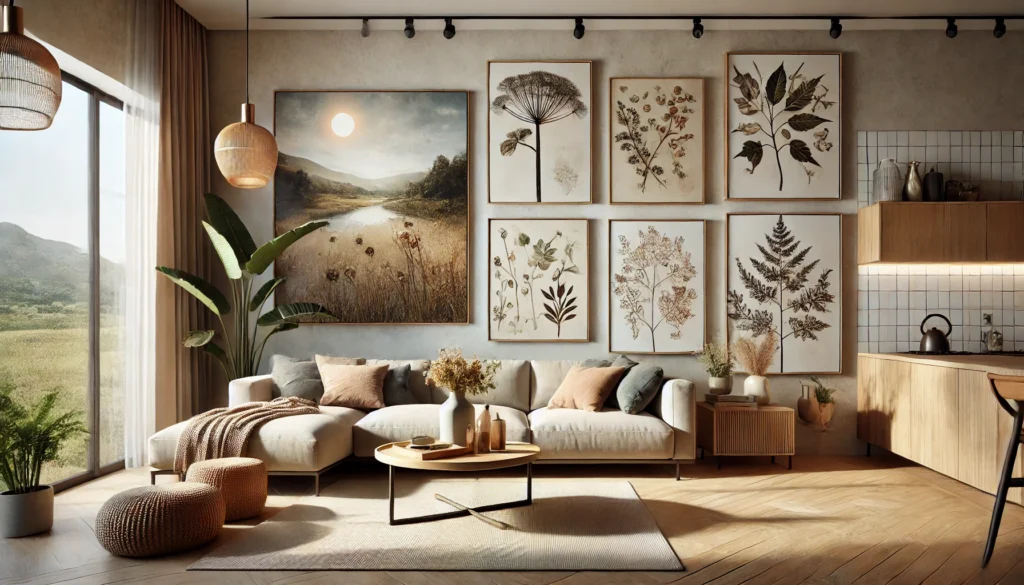
Nature-inspired art is an essential component of biophilic home décor, bringing the beauty and peace of the natural world indoors. Here’s how nature-inspired artwork may improve your home:
Benefits
- Aesthetic Appeal: Increases beauty and visual intrigue by creating focal points.
- Connection to Nature: Improves mental and emotional well-being.
- Mood Enhancement: Lowers tension and promotes relaxation.
- Personal Expression: Expresses individual preferences and relationships to nature.
Types of Nature-Inspired Art
- Landscape paintings depict serene vistas of mountains, forests, and beaches.
- Botanical prints feature detailed depictions of plants and flowers.
- Wildlife art depicts animals and birds.
- Abstract Nature Art: Contemporary depictions of natural components.
Nature-inspired art in biophilic home décor not only adds aesthetic appeal to your living space, but it also fosters a stronger connection to nature and a sense of well-being. By carefully merging these art pieces, you may create a harmonious and inviting environment that represents the beauty and peace of nature.
Conclusion
Incorporating these biophilic home decor ideas into your home décor can improve your connection to nature, promote mental health, and create a quiet, revitalizing environment. These products provide a variety of methods to bring the outside inside, including indoor plants, natural materials and nature-inspired art. Accept biophilic design and make your home a refuge that nurtures both your mind and spirit.

